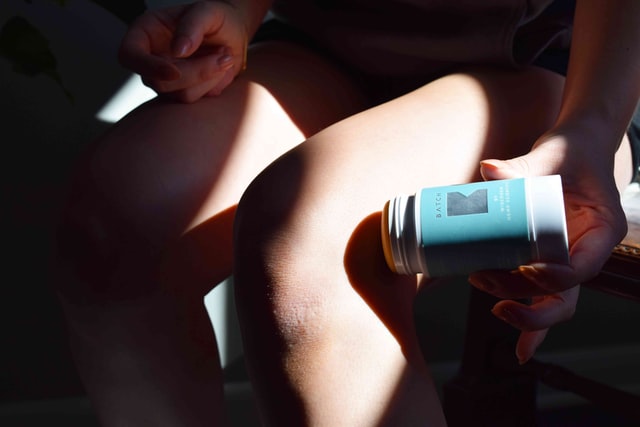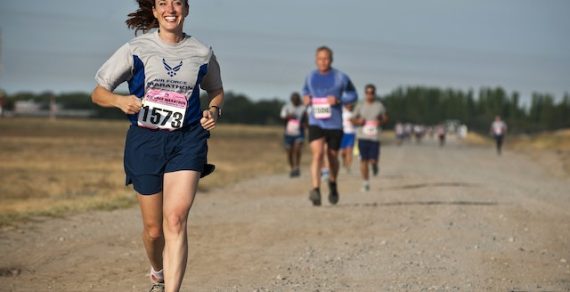Conditions when knees are injured after exercise are uncomfortable and, in some cases, even dangerous. Of course, pain can result from overexertion or inadequate rest, but no possibility can be ignored. In this article, we will list all the causes of knee pain after exercise and tell you how to get rid of it.
Exercise should be good for the body and in no way harmful. If something hurts after a course, the process does not go anywhere as it should. Knee complaint is one of the most common complaints. Why is it like this? Because they work in all kinds of stresses – freestyle, strength sports, fitness, martial arts, and so on. The knee is, unfortunately, one of the most sensitive. So why can knees hurt after exercise and exercise? Let’s say the reasons.

Table of Contents
Why do the knees hurt?
First of all, let’s refute the common belief that it’s normal to have knee pain after exercise. Well done, they say; he practiced well. This is a wrong opinion and even dangerous. Ignoring symptoms and pain is a sign from the body that something is going wrong. It can lead to severe consequences because sports can be completely forgotten.
So if your knees hurt after exercising, the reason may be as follows:
. Too much load: The knee is a fantastic structure that can support body weight and pressure during exercise. However, the possibilities are not endless. Suppose you exercise too often and excessively and do not give yourself enough time to recover. In that case, the team’s internal muscles and connective tissue may become swollen. The most unfortunate result of ignoring such a problem is the destruction of cartilage and the deformation of bone tissue.
. Age-related changes: A child’s knee hurts much less often after exercise than an adult after 35 years. Unfortunately, this is a proven fact – with age, a person’s production of collagen decreases. Meanwhile, the latter is the main component of synovial fluid that prevents the cartilage from tearing.
. Mechanical damage caused by shocks: Everything is small – you could hurt your knee, and that’s why it hurts. If you stretched, loosened, hit a team, show yourself to an orthopedic surgeon immediately. Do not take self-medication.
. Inflammation caused by specific diseases: We are talking about running processes, injuries, sprains, and pain that have been ignored for a long time. These inflammations are called bursitis. They also develop due to infections, weakened immunity, overeating, stress, vitamin deficiencies, hypothermia, and abuse of bad habits. Appears with acute pain in the knee joint and complete shrinkage of the surrounding muscle tissue; In addition to bursitis, other diagnoses are often found – arthritis (accumulation of pathological fluid in the joints), tendonitis (tendonitis), and arthritis (chronic arthritis).
. Too much weight: Unfortunately, obese patients tend to injure more knees after exercising than people who are in good shape. Every extra gram puts more strain on the joints, and in terms of physical activity, the effects are devastating
. Failure to practice the technique: If your knee hurts when you bend after a workout, you are probably not using the method correctly. Ask a coach or experienced athlete to supervise you at all stages of squatting.
. If your knee hurts after walking on your feet, you may choose the wrong shoes: Sneakers should be sized, with assistive soles, soft, not heavy. At the same time, winter shoes are different from their summer brother’s.
. Bone diseases caused by genetics: Banal smooth legs because the kneecap protrudes at a bend, which with great strain eventually leads to acute pain.
Solutions
. Above, we mentioned the reasons why people have knee pain after training. As you can see, the athlete is often to blame, who is careless about his health and does not follow the technology. Let’s figure out what to do if a knee is injured after a workout for any of the above reasons:
. Under excessive pressure, of course, it must be reduced. Review your schedule to make sure there is a break between all training days. The curriculum may also need to be adjusted. Do not let your knees actively participate in any exercise. For severe pain, apply cold to the joint 2-3 times a day for a quarter of an hour. To relieve inflammation, lie on the couch with your feet up. You can use a special ointment for knee pain after exercise. Remember that only a doctor can correctly determine how to treat your knees.
. Fighting against time is pointless; more than one classic wrote about it. After 35 years, all athletes are advised to drink regular gelatin and collagen ingredients, strengthening the ligaments, tendons, bones and preventing cartilage tissue destruction. Under the supervision of a doctor, it is possible to take courses in electrophysiology, massage, etc., several times a year.
. In case of injury, it is necessary to fix the joint to the maximum. If you cannot get up, call an ambulance directly to the gym. To avoid grass, never let go of heating and cooling and carefully follow your technique before all exercises. This is especially true when working with a plot. By the way, after strength training, bandages are made of elastic bands perfectly knees.
. To prevent the transition of acute inflammation (bursitis and sinusitis) to a chronic stage should be treated promptly. Do not overuse warming and analgesic ointments, as they only treat the symptom, not the root cause. The latter will only be determined correctly by a qualified physician.
. Follow your diet, eat a balanced diet. If you are overweight, do not overuse simple carbohydrates and fatty foods. With very heavyweights, many exercises in the gym are contraindicated. Make sure you are not addicted to any of them.
. Suppose you do not know what to do, as your knees constantly hurt after fitness, even with the proper construction techniques. In that case, it might be worthwhile to make it a little easier for them. Temporarily exclude jumps, runs, and other exercises that lift both feet off the floor from the program. Stick to the plan – less weight, but more sets. If no result is seen, consult a doctor.
. Purchase quality sports equipment;
. Drink plenty of water. Remember that you can and should drink water during exercise, but in moderation;
. If you have had knee problems recently, avoid trauma and exertion. Do not forget to rest well and follow your diet. Eat jelly and gelatin, bite cartilage from beef bones.
What to do if my knee is swollen?
Then we have identified all possible situations where it hurts below the knee after training. It is also important to discuss another topic – inflammation. It is the one that does not subside and, with increasing pain, usually indicates a frightening problem.
When does the knee joint swell?
. In case of injury: In this case, the kneecap is injured after exercise so much that it is impossible to tolerate;
. Morbid inflammation of the joints: In these situations, the knees will hurt a lot even months after exercise, especially if left untreated;
. Development of arthritis or arthritis: In the first, the cartilage is destroyed, forcing the knee to swallow when walking. As a result, the joints lose and become deformed. In the latter, a strange crunch is seen in the morning; the knee fades inactive. Subsequently, the foot may bend.
In addition to inflammation, there is usually a lot of redness in the area, pain when pressed, and increased body temperature. The nature of the pain is different. Someone after a workout has a sore back below the knee, while another has sharp pain in the calf itself during the mouth.
Any such symptoms are an unconditional reason for a visit to an orthopedic surgeon.
Security in the hall
Adherence to simple rules significantly increases the chances of keeping joints healthy and secure, even with regular strength training.
. During squats, the knees should not extend beyond the toes;
. In the upper phase, after lifting, never fully open the knee joint. Let it remain bent;
. Always keep you’re back straight while squatting, but you can only bend at the lower back;
. Do not swing your knee to the sides while pushing. Always move along the same axis.
Remember that if your knee hurts, even after a simple exercise on a stationary bike, never ignore the symptom. The cartilage tissue is not restored, so the damaged joint must be replaced with a prosthesis. And this is a costly operation. Fitness and strength sports should be practiced with vigor and without fanaticism. Avoid doing exercises that put undue strain on the team. Work with adequate weight and use knee braces. Be healthy!




